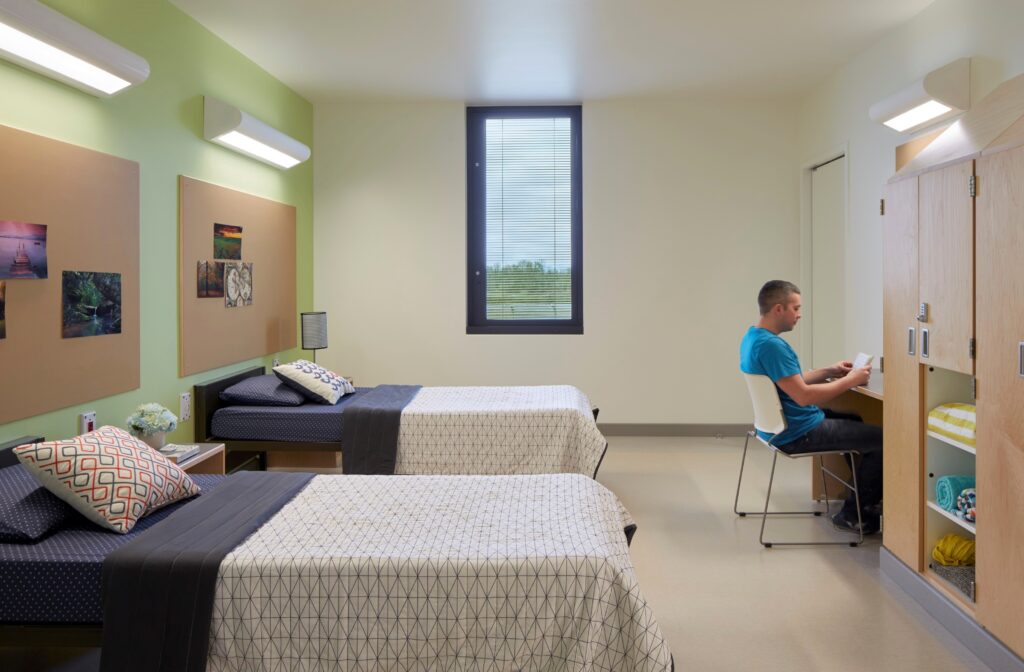Elevating Mental Health Awareness through Behavioral Healthcare Interior Design
As Mental Health Awareness Month takes center stage, we turn our attention to the power of design in creating spaces that foster healing, hope, and resilience.
In the realm of behavioral healthcare, interior designers face a unique set of challenges and considerations to provide environments that promote mental well-being. From cultivating peaceful and functional areas to embracing durability and safety, the intricacies of behavioral healthcare interior design are crucial in supporting patients’ journeys toward recovery.
We asked Donald Cremers and Michele Hutchinson from HOK to share their thoughtful approach, innovative solutions, and compassionate design principles that shape the healing spaces they design.
Our overall design goal of healthcare environments is to create “healing” spaces, where comfortable, peaceful, functional, and calming attributes are considered. When we take on a behavioral healthcare project, we must dig even deeper for ways to include the features above, but also have many additional, often complicated, things to consider such as:
Consideration of different areas where patients will be throughout the day is important, such as quiet, contemplative areas vs. more active treatment spaces. Interior design lends itself easily to this with color for example: softer tones in the “home” spaces and the ability to increase saturation and even graphics in more active areas.
Treatment areas, such as classrooms, are set up to maximize multi-purpose functions. Different programs can include anything from art therapy, job preparedness courses, writing workshops and even cooking classes. The finishes then need to be incredibly durable and detailed to meet the safety requirements of the space. The goal of the interior design is to create a warm environment that encourages creativity and healing.
Patient environments need to be secure, anti-ligature & tamper-resistant to meet the safety needs of the patients and staff.
Visibility is an important factor in these facilities as well. Staff must be able to easily supervise spaces, so when designing things like nurse stations, providing open access helps to create an environment that encourages communication between patients and staff. Access to daylight and views is also an important factor; nature is very healing, and being able to celebrate views and artwork depicting nature is always encouraged.
Designing behavioral healthcare environments continues to increase our compassion for people who struggle with mental illness. The goal of these facilities is to prepare patients for life outside of the facility, where they can live healthy, normal lives – love participating in that journey.




Donald Cremers, IIDA
Senior Principal – Interior Design Leader at HOK

Michele Hutchinson, INTCA, LEED GA
Senior Project Interior Designer, Senior Associate at HOK